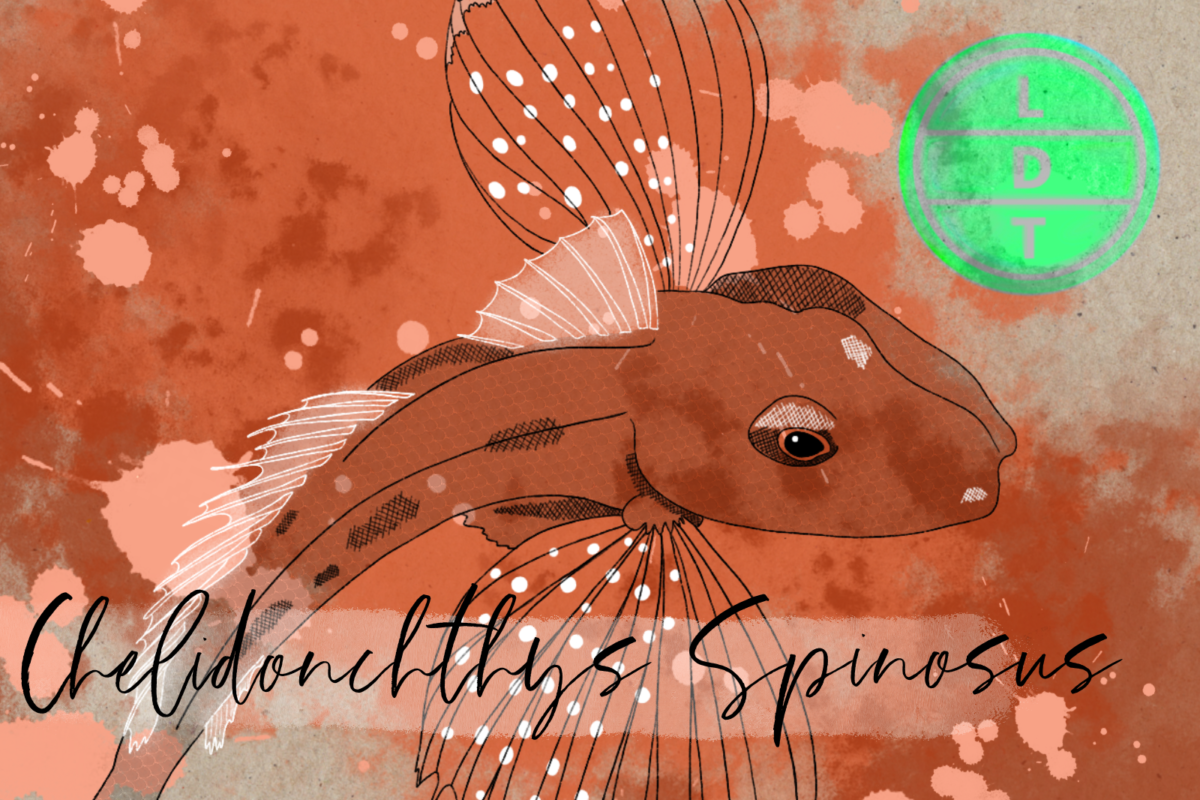“…and today we’re talking about the marine of the marina that can swim, fly, and crawl. But more on that later.”
The ocean is a breeding ground for aberrant creations. Pressure and struggle has formed some of the most peculiar Pisces on the planet. But one fish wanted so badly to skitter along the ocean floor like a crab, they could almost reach out and touch it. But not with a fin, with something much more bizarre. The sea robin may be bizarre, but it’s no deep cut of the deep, it’s one of the most common family of fish to be found. But sometimes when circumstances get you down, you just have to crawl towards Life, Death, and Taxonomy.
This was a suggestion from Eliana!
Description of the Sea Robin
- Looks like a lionfish – shaped like a bottom feeder with eyes on the top of its head
- It has blotchy red and white scales and yellow eyes
- But the real party is in the fins
- The dorsal fin is bright red with a Davy Jones’ black spot on it.
- A large black spot ringed with yellow like it’s the darksign
- It actually looks like one of its actual eyes
- The pectoral fins (nemo’s arms) are these giant horizontal green discs ringed with fluorescent bright blue and sporting bright blue dots
- Like a long goldfish with pretty fans glued to it
Measure Up
Welcome to the beloved Measure Up segment. The official listener’s favorite part of the show! The part of the show when we present the animal’s size and dimension in relatable terms through a quiz that’s fun for the whole family. It’s also the part of the show that’s introduced by you when you send in audio of yourself saying, singing, or chittering the words Measure Up into ldtaxonomy at gmail dot com. We don’t have a new Measure Up intro this week but we are going back in the archives to revisit greatest hits.
Length
- 40 centimeters (16 in)
- How many spiny red gurnards go into the height of Overtoun Bridge in West Dunbartonshire, Scotland, a bridge that is famous for a series of unexplained canine bucket kickings since the 1950s.
- Hint: For some unknown reason, over 600 dogs have unexpectedly and suddenly leaped from the bridge, resulting in the deaths of 50 of them. Explanations range from the activity of malevolent spirits to radio waves that send the dogs into a frenzy. The leading theory is a combination of factors. The surrounding flora is home to mice, squirrels, and mink, the latter of which was first introduced to the area in the 1950s. Overgrown foliage when entering either side of the bridge may also trick the dogs into thinking they are passing by a wall with level ground on the other side. And when they leap onto the downward sloped wall, it’s too late to reconsider.
- 37.5 fish. The bridge is 50 ft (15 m) high.
Weight
- 1 lb to 1.5 lbs (0.68 kg)
- How many gurnards go into the weight of the largest species of crab?
- Hint: The Japanese spider crab is the largest with a claw to claw length of over 12 feet.
- 28 fish. The crab can weigh up to 42 lbs (19 kg).
Fast Facts about the Sea Robin
- Range: Northwestern pacific ocean
- Diet: worms, crustaceans, small squids, molluscs
- Behavior:
- They have something called a drumming muscle that allows the sea robin to make sounds by hitting its own swim bladder
Major Fact: Walking Rays
Upon first glance, the sea robin might look like any fish except for its striking winglike fins. But when you look closer, you may notice it crawling along the seafloor on what looks a lot like crab legs. These “legs” articulate individually and allow them to feel around the sandy floor, making this fish look like some sort of crustacean chimera.
But these legs aren’t legs at all. Instead, they are adapted spines that come from the structure of their pectoral fins.
The pectoral fins on a fish are the fins located on either side. Sea robins have large, dumbo-esque pectoral fins. But a few structural spines from these fins branch off during development to be independent of the rest of the fin.
These spines are called walking rays, and there are usually three on each side. Each one of these rays is supported by unique muscles that allow them to be articulated individually. Walking rays support the fish while they look for food on the seafloor, and it may help stabilize them in strong currents.
In addition to locomotion, the rays also help sea robins detect prey. They are highly sensitive to certain amino acids that are found in ocean invertebrates. The spins may act as maneuverable chemoreceptors, so if you are ever a few inches tall on the seafloor and you get tapped on the shoulder, start swimming as fast as you can.
Ending: So rim your fins, beat the crud out of your swim bladder, and crawl along the sea floor with your branched pelvic fins like the gurnard here in LDT.

